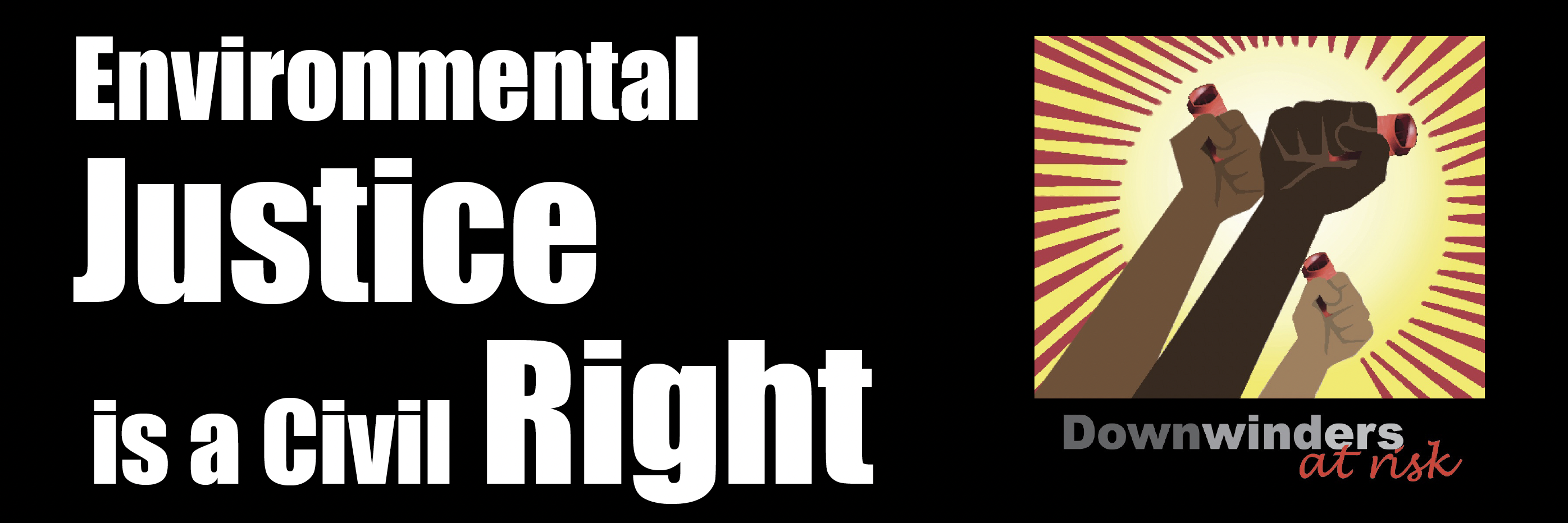Particulate Matter
New Grant Gives Us a Campaign Budget for 2 Years
 Downwinders at Risk is proud to announce we received a very generous $40,000 grant from the Dallas-based Simmons Sisters Fund in December to cover the costs of our “No Safe Level” PM pollution protection campaign for the next two years.
Downwinders at Risk is proud to announce we received a very generous $40,000 grant from the Dallas-based Simmons Sisters Fund in December to cover the costs of our “No Safe Level” PM pollution protection campaign for the next two years.
This money will be going to buy both portable and stationary PM pollution monitors, educational and outreach materials, including videos, websites and social media campaigns, new studies we need to advance the cause, and a host of other things we would not have even thought possible before the arrival of this grant. We can’t tell you how excited we are to have this kind of budget. We can really start to make a difference right out of the gate.
But we still need you. We need you to show-up at our monthly meetings and learn how you can plug into this campaign, which has the potential to reshape public policy in so many ways. We need you to invite us to your PTA, club, or church gatherings to present the information about PM that makes every audience gasp. And yes, we still need your donations – to pay for salaries of our one and half staffers, other projects, and special events like our Root and Branch Conference.
We just got a huge vote of confidence in our new campaign from the Simmons Sister Fund. Please consider giving your own as well. Thanks.
New Study Adds To PM Harms: Exposure Linked to Increases in Juvenile Delinquency
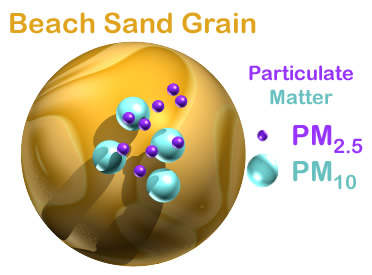
The first study to look at the effects of PM pollution exposure on the social behavior of children found that that the more bad air a child inhaled, the more likely they were to engage in delinquent activity.
Published in December’s Journal of Abnormal Child Psychology by researchers at UCLA, UC Irvine, and Orebro University in Sweden, “Longitudinal Analysis of Particulate Air Pollutants and Adolescent Delinquent Behavior in Southern California” is already a landmark study in the growing field of PM research. It further demonstrates the similarities between PM and the handful of other neurotoxins linked to delinquency – like lead.
While past studies have identified a range of neurological impacts associated with PM pollution, including Autism and Parkinson’s Disease, this is the first time it’s been linked specifically to anti-social behavior. According to the authors, cumulative exposures were found to result in developmental differences lagging as many as 3 to 4 years behind the norm.
Not surprisingly, African-American boys, and children who lived in neighborhoods with poorer air quality and less green space had both higher PM exposure levels and higher delinquency rates.
This is only the latest reason why Downwinders at Risk has identified PM as Air Pollution Enemy #1. There’s not another pollutant that’s been linked to so many different health harms – from lung cancer to strokes and heart attacks, to immune and reproductive system damage to a host of brain illnesses both profound and subtle.
All of these harms are caused by “normal” levels of exposure to PM. And that’s why that exposure level must come down.
A Group That Shouldn’t Be Here…Still Is. Thanks.
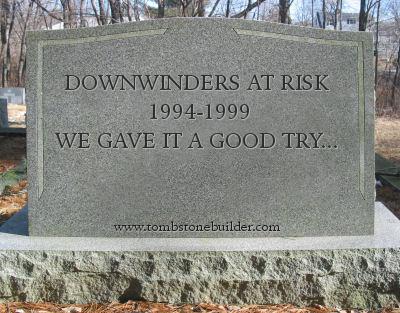 By all rights, there shouldn’t be a Downwinders at Risk around anymore.
By all rights, there shouldn’t be a Downwinders at Risk around anymore.
The life expectancy of a local grassroots group rising up to fight a bad permit is a couple of years if you’re lucky, twice that if you’re extremely lucky.
We’re beginning our 23rd year. Throughout that time, we’ve ridden our share of organizational roller coasters and still managed to disembark with our group intact.
When we lost our hazardous waste permit fight with TXI in 1999. When we fought our Green Cement battles. When we debated taking on lead smelters and gas drilling in addition to cement kilns. Those were tough times.
But this year was among the most disheartening and frustrating… and hopeful and exhilarating. On Inauguration Day, the program work of the last five years centering on DFW smog evaporated with the installation of a hostile EPA. We then lost 50% of our board between January and July through moves, illness, and exhaustion. We weren’t sure we were going to make it to the end of this ride.
But then things started to happen.
15 brave souls signed-up for an inauguration of our own as we began the College of Constructive Hell-Raising as an experiment in cross-movement, cross culture networking. By May’s graduation, there was a consensus it was a successful one and we recruited at least one board member from its alumni.
Our “Science and Socializing” events in June attracted new blood, including young scientists and researchers that wanted to help with 21st Century high-tech air quality monitoring.
We conceived a new campaign centered on Particulate Matter pollution, a pervasive and potent toxin linked to everything from early death to learning disabilities. A toxin we can reduce exposure to without the permission of the EPA or State of Texas. We believe this effort will take us places no DFW environmental group has ever gone before: highway and urban planning, transit and housing policy, as well as the familiar ground of environmental racism and citizen empowerment.
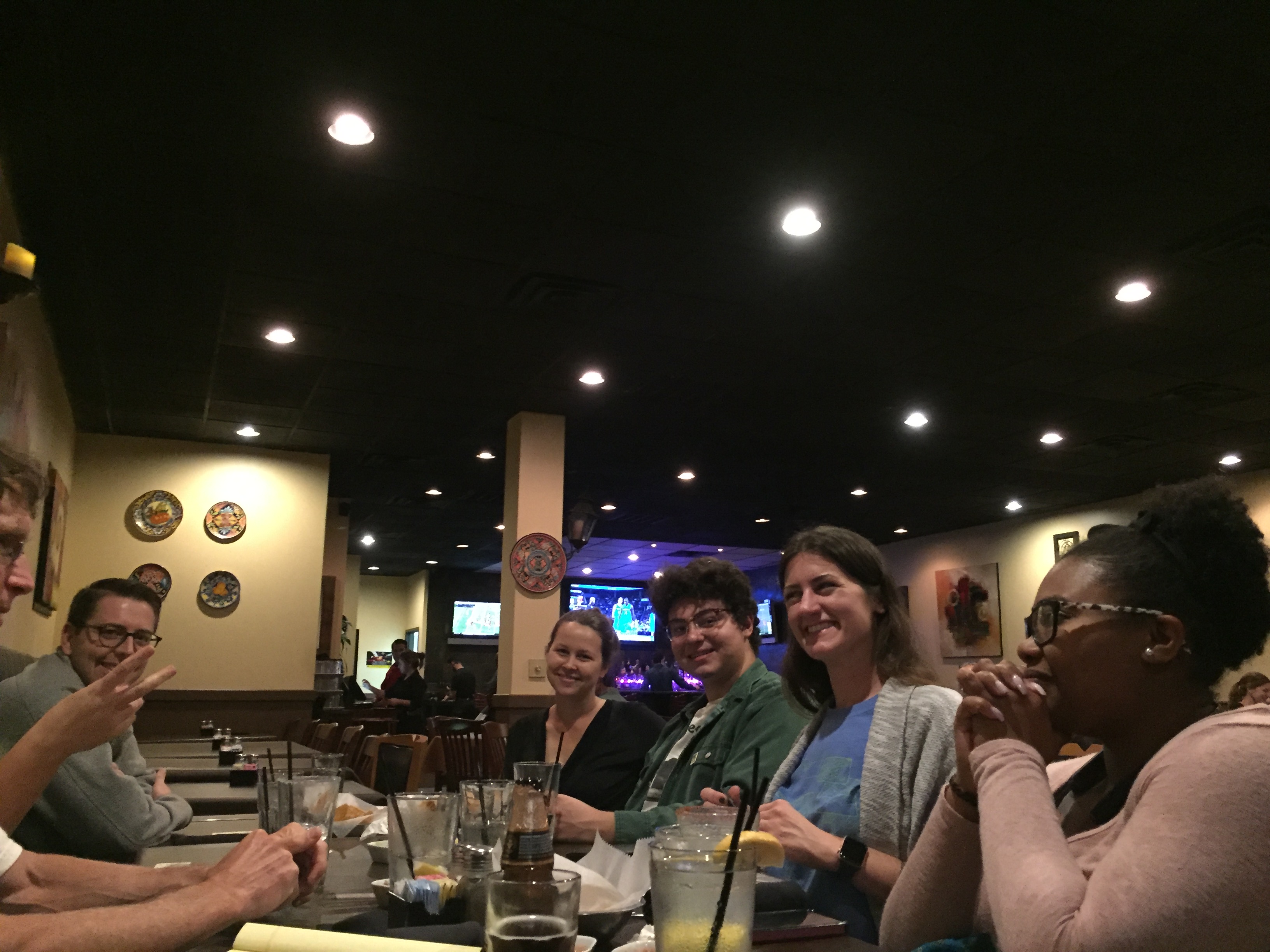
And we’re back to close-to-full board strength, with most of our new members a generation or two younger than the board members they replaced. Twenty somethings are almost in the majority now. We have a board member who was born the same year we were.
In short, Downwinders at Risk as reinvented itself…again.
There’s no better proof of that than what was going on a couple of weekends ago.
In Dallas, the newest members of our board were running the first meeting of our “No Safe Level” Particulate Matter campaign – without Director Jim Schermbeck anywhere in sight.
Meanwhile, in Austin, Associate Program Director Anthony Gonzales was meeting with Libertarian Party officials in an attempt to build a never-before-attempted bi-partisan grassroots alliance to advocate for more “local control” in upcoming Republican Primary races and the 2019 Legislature.
North, in rural Wise County, UNT graduate student Kari Nothiem was working to establish a location for our very own ozone monitor – in the only “non-attainment” county where the state still refuses to monitor for smog. It’s part of a citizens network of new air quality monitors we’re working with UTD and others to establish across North Texas to replace the state’s obsolete system.
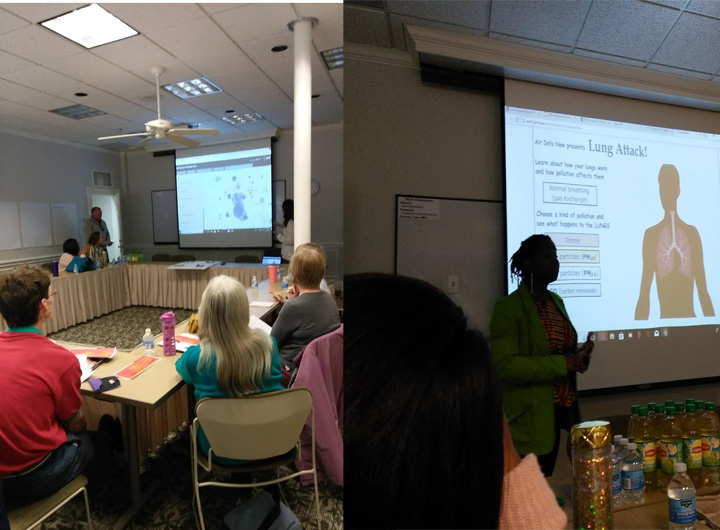
We hope you agree both the geographical and thematic reach of this new Downwinders at Risk is impressive for any group, but especially one that’s entirely dependent on DFW residents and resources. This is our home office. Your neighbors are our board members. This is our only work.
And if you’re reading this, you’re an important reason we’re still here. Even as our mission has broadened and deepened, you’ve been supportive. That’s taken a lot of faith at times. Thank you to each and every board member, volunteer, and contributor.
We started 2017 in suspect shape. We’re ending it with renewed vigor and optimism.
If 2017 was about renewal, 2018 is shaping-up to be a Reveille right out of the gate.
Batch plant permits in Joppa and West Dallas are due to show back up on the Dallas City Council Agenda in January. We’ll be there as part of our campaign to reduce PM pollution and argue that both communities need a bottom-to-top zoning review to better buffer people from pollution.
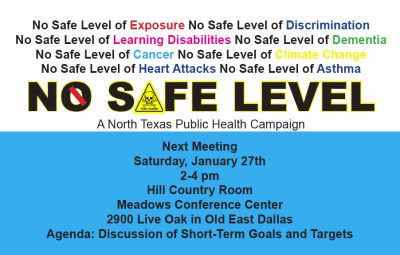
Those fights, plus transit system and school-based initiatives are on the agenda at our next No Safe Level campaign meeting on PM pollution scheduled for Saturday January 27th from 2 to 4 pm at the Meadows Conference Center 2900 Live Oak in Old East Dallas. All are welcome.
It looks like we might have our first vote on a new regional air monitoring network at Dallas Commissioners Court on January 16th – the first step to a truly 21st Century approach directed by local governments.
Later that same day, the 2018 class of our College of Constructive Hell-Raising begins meeting (late-comers still being accepted….)
And if everything goes as planned, we’ll be announcing the creation of a broad left-right coalition working to restore local zoning powers to local governments in Austin sometime next month.

We had a very good Giving Day this year and you may feel as if you’ve paid your clean air resistance dues for 2017. We understand. But if you like the direction the group is going and you want to do some early 2018 voting with your pocketbook, we could sure use the help as our work expands.
Thanks for your continued support and your consideration of a contribution to the cause we’ll try our best to serve for a 23rd consecutive year.
DONATE HERE
Meet Our New Campaign Targeting Toxic Particulate Matter: “NO SAFE LEVEL”
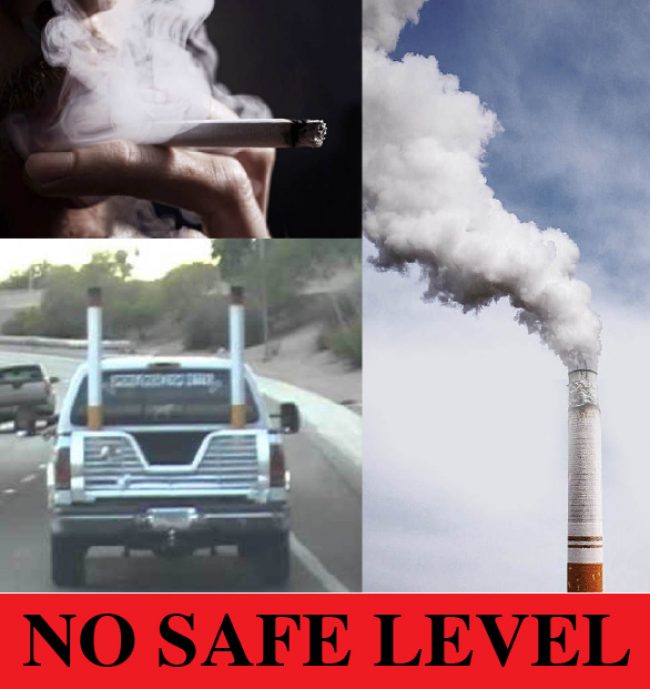
Toxic Particulate Matter – “PM” – is the New Lead
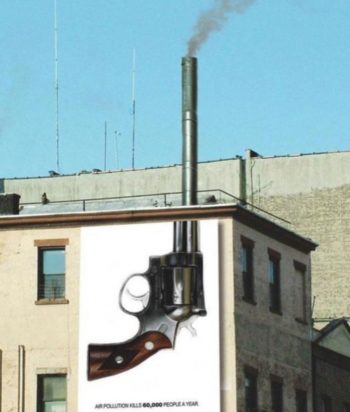
PM is the scientific name for industrial soot. It comes from burning things. Wood. Gasoline. Diesel. Coal. Waste. Everything that depends on on burning something, produces Particulate Matter: cars, trucks, buses, locomotives, boilers, furnaces, kilns, etc.
PM pollution is tiny. It’s much smaller than nature’s dust particles that our nose hairs, throat and lungs have evolved to handle most of the time. Because its so small PM pollution can actually pass through your lungs’ lining and goes directly into your bloodstream. From there it goes to any organ it’s carried to – the liver, the reproductive system, the brain.
Numerous studies have shown the terrible impact of PM pollution on human lungs and hearts.It causes heart attacks, strokes, asthma and COPD. More recent studies have shown a whole new threat. Exposure to PM is now linked to AHAD and Austim in children, and Dementia and Parkinson’s disease in adults. Immune system and reproductive organ damage have also been ties to PM exposure. Like lead in paint and gasoline, this pollution can do damage to a person’s social and intellectual capacities, not just physical ones

PUBLIC INFO & BRAINSTORMING SESSION:
The Dangers of PM Pollution and What We Can Do About It in DFW
Saturday, December 9th
2 – 4 pm
2900 Live Oak in East Dallas
ALL ARE WELCOME
This year the most comprehensive study on PM pollution health effects ever produced was published by Harvard’s School of Public Health. It covered 60 million people over 12 years.
It found significant health damage occurring at levels well below the current EPA standard and concluded there is no “safe” level of exposure to PM pollution. That is, there is no exposure that is not capable of doing some harm to you, no matter how small.
That same study found African-American seniors were three times more likely to die from PM exposure than any other group, with Latinos and Asians also suffering disproportionately. “Point Sources” (smokestacks) of PM are more likely to be in located in low-income communities of color. People of color are more likely to ride diesel-powered buses used for public transit or live along PM-spewing freeways. There’s no other type of pollution that’s linked so closely to how “undesirable” industries and people were forced to live next to one another over the decades.
Here in DFW we’ve flirted with high regional levels of PM pollution but we really don’t know the extent of it since the EPA and State only have four PM monitors for the entire DFW area of seven million people.
That’s why our first job is to help map PM pollution hot spots in DFW. Downwinders is building a “Citizen’s Guide to PM Pollution” that identifies all the largest sources of PM pollution – factories, railways, freeways, transit and school bus routes.
We’re purchasing portable PM pollution monitors citizens can use to police their own neighborhoods and helping to build a new monitoring network that cities can use to track events like the one on Oct 19th – that still remains a mystery.
What can be done in DFW to reduce our exposure to PM pollution? New controls on industry of course, including the cement kilns and coal plants. But also electrification of bus fleets, buffer zones beside freeways, and a detangling of pollution and people in places like West and South Dallas and the Northside of Fort Worth that require pushing the reset button on local planning.
Just turning bus route shelters 180° around so they don’t openly face street traffic has been found to reduce exposure to PM pollution by 30-50% for transit riders – one of the populations at highest risk for PM exposure.
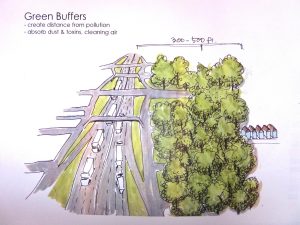
PM pollution is everywhere. It’s so ubiquitous we take it for granted. Much like people took cigarette smoking for granted 40 years ago. And that’s where we’re at with this campaign, at the very beginning of a massive public health education and advocacy effort, a no-smoking campaign for machines that also has the potential to reshape planning, politics, and culture. We have a huge task ahead of us. And we need your help.
Come join us on December 9th to learn more about this insidious from of air pollution and help us come-up with the best approaches for where to start reducing it in DFW.
Saturday, Dec. 9th 2-4 PM Meadows Conference Center 2900 Live Oak
Mysterious Catastrophic Air Pollution Episode is Why DFW Needs its Own Air Sensor Network
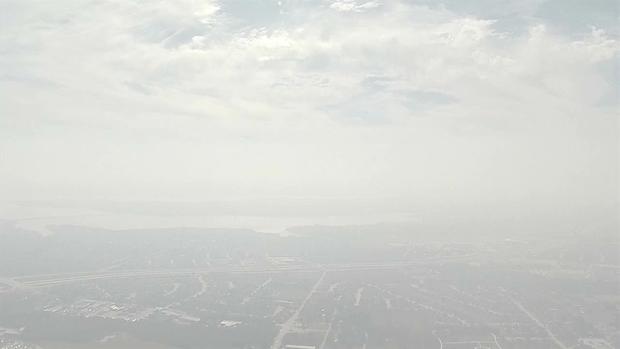
Not quite two weeks ago, on Thursday October 19th, something happened to throw local air quality conditions into the red zone for most of the day.
There was a inexplicable smokey haze extending along the limestone escarpment from Midlothian to Dallas and then north to Denton, sending Particulate Matter pollution soaring to Beijing levels and ozone readings so high the whole regional average went up a part per billion. Countless downwind residents complained to officials, FaceBooked, and Tweeted about “the smell of burning plastic” enveloping their neighborhoods with the smoke, which was so thick many thought the problem was just down the street.
 The 24-hour standard for Particulate Matter Pollution is 150 ug/m3. The annual standard is 12.
The 24-hour standard for Particulate Matter Pollution is 150 ug/m3. The annual standard is 12.

70 ppb is the new ozone standard.
The events took the Texas Commission on Environmental Quality completely by surprise. Commission computer forecasting had not predicted an Ozone Alert Day or warned of heavy PM pollution. Officials were playing catch-up for the rest of the day.
Now almost two weeks later nobody official knows what caused this Really Bad Air Day. Not the EPA. Not the Texas Commission on Environmental Quality. Not the DFW area citizens who breathed in the dirtiest air their lungs have seen all year.
Despite the sophisticated technology available to us in 2017, a single unexpected incident upwind of DFW can throw the entire North Texas air shed into the danger zone with no warning and no clue as to what initiated it.
Readings from state monitors were of no help until damage had already been done. As usual they were two hours or more behind in reporting. The numbers they were displaying at 12 noon were actually taken at 10 am. You had no idea what was going on in real time so that you might better protect yourself or family.
There are only three or four Particulate Matter pollution monitors in all of DFW. Even if you’d wanted to use the state’s current monitoring system to track this mystery plume, you couldn’t have done so. It doesn’t have that capability.
As inquiring reporters called, the TCEQ staff found a variety of things to blame. TCEQ suggested the smoke was from a Bastrop forest fire near Austin. But readings from monitors between Bastrop/Austin and Dallas show there was no problem south of Midlothian that day, while there was a huge problem north of there at the same time. Eyewitnesses who saw the plume on Thursday reported a thick narrow ribbon of a plume you’d see coming off a near-by source, not the sort of diffused cloud you’d expect to witness after traveling more than a hundred miles downwind. And then there’s that “burned-plastic smell.”
Then it was maybe one or more “controlled burns” in the Midlothian-Mansfield area. As it turns out, neither fire department found evidence of any permitted controlled burns in their own jurisdictions that could have cause so much pollution. Midlothian’s single permitted fire for the day was “the size of a coffee table” according to a department employee.
According to the Mansfield Fire Department “a fire” was reported to be located at Kimball Road and Hwy 287 just north of the Midlothian city limits. This is what’s at that intersection:
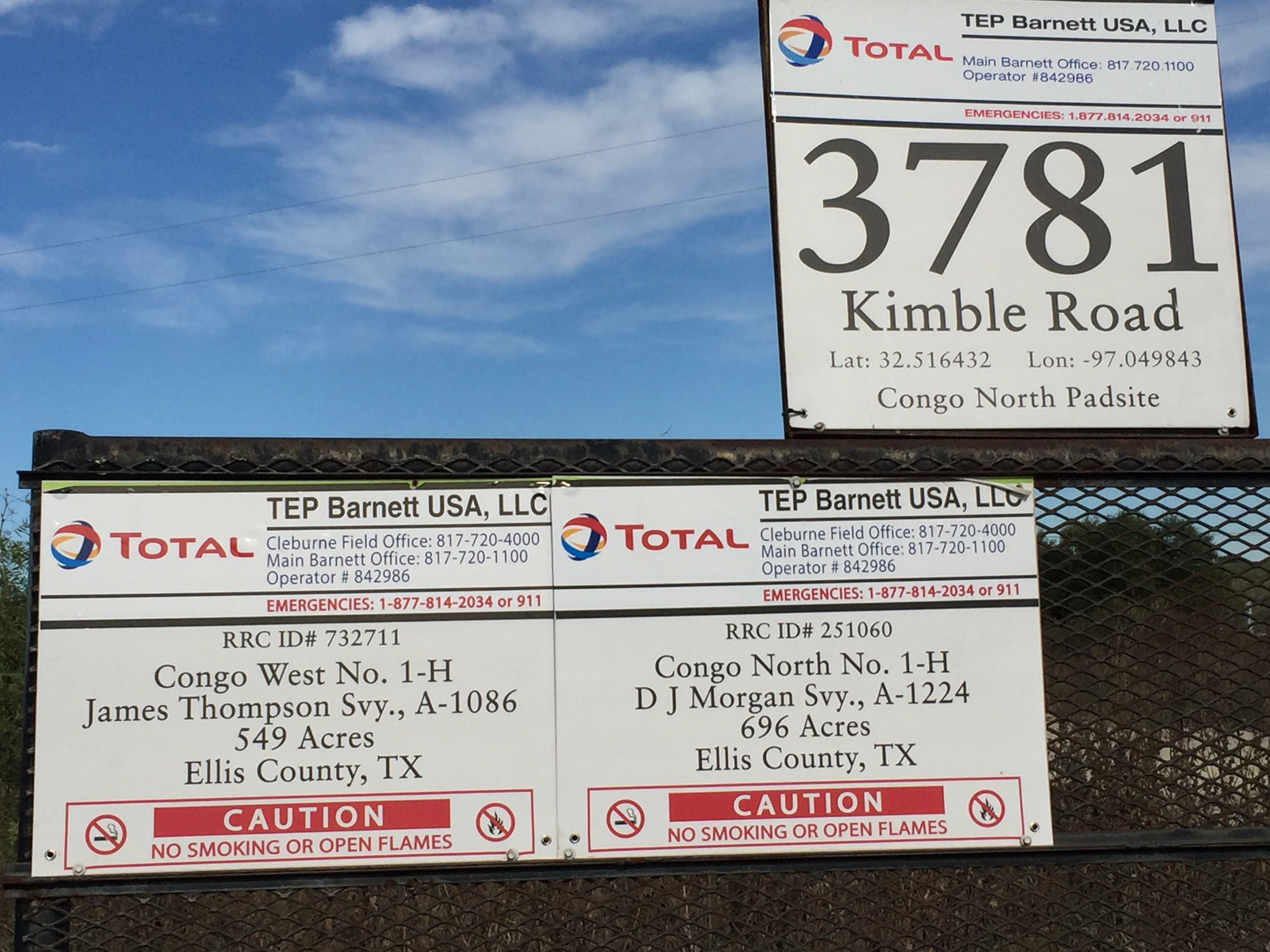
Please note the caution against open flames. Could a fracking site have produced the kind of particulate matter pollution and haze we saw on October 19th without methane or other kinds of pollution being released en masse as well? It doesn’t seem like it could. But what if the fracking site had been turned into a temporary waste incineration site for the day?
That’s not all. A satellite pic of the intersection and what’s around it reveals Kimball and Hwy 287 to be a kind of rogue’s gallery of potential suspects:
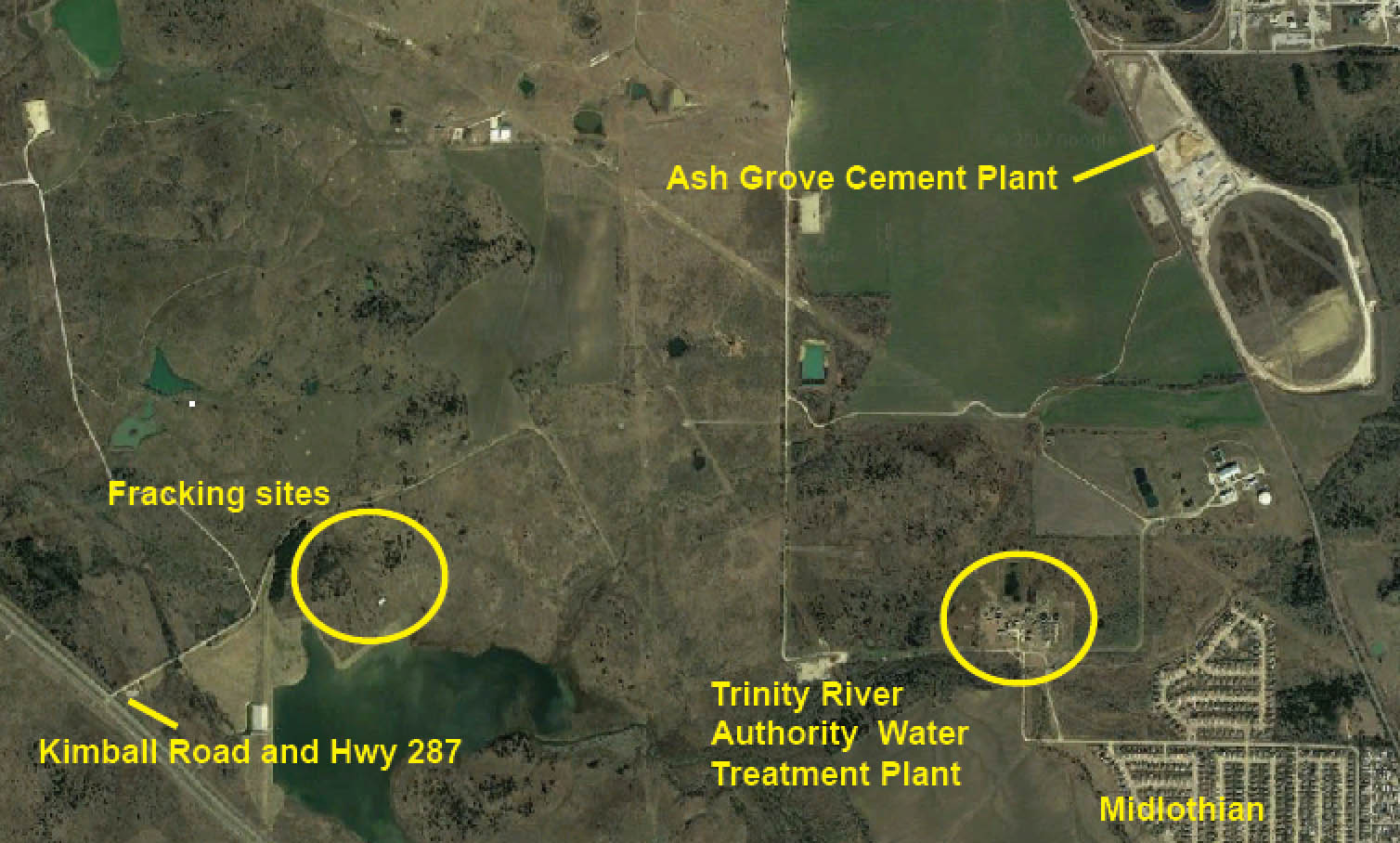
Besides the fracking sites you can be see in mid-drilling on this Google street level tour, the road leads to a Trinity River Authority Wastewater Treatment plant and the back door of the giant Ash Grove cement plant.
TRA is a shadowy, 60-year old regional bureaucracy that owns millions of acres of land, reservoirs, landfills, and wastewater-treatment facilities. It’s been in environmental hot water before. Wastewater treatment accumulates a lot of solids, and the TRA handles a lot of trash. It’s not inconceivable that it had something to do with the October 19th incident by thinking it could get away with an open burn on its own property.
Ditto for Ash Grove. Like the other two cement plants in Midlothian, Ash Grove’s kiln is allowed to burn industrial waste, including used oil, tires and plastics – remember the oft-cited “smell of burning plastic” citizens reported on the 19th? Waste-burning cement plants have had their wastes combust and cause huge fires before and each plant has its own emergency response crew which might be able to put out a fire without calling Midlothian.
There’s no proof Ash Grove, TRA or the fracking sites were the cause of the October 19th public health disaster. But there’s also no proof yet they didn’t cause the problem.
The truth is: there’s no official explanation for what made the air so dangerous to breathe on October 19th .
More truth: As of Friday, October 27th the TECQ had not even opened an official investigation into this matter – which again, sent Particulate Matter pollution to levels not seen outside SE Asia and single-handedly raised the regional ozone level.
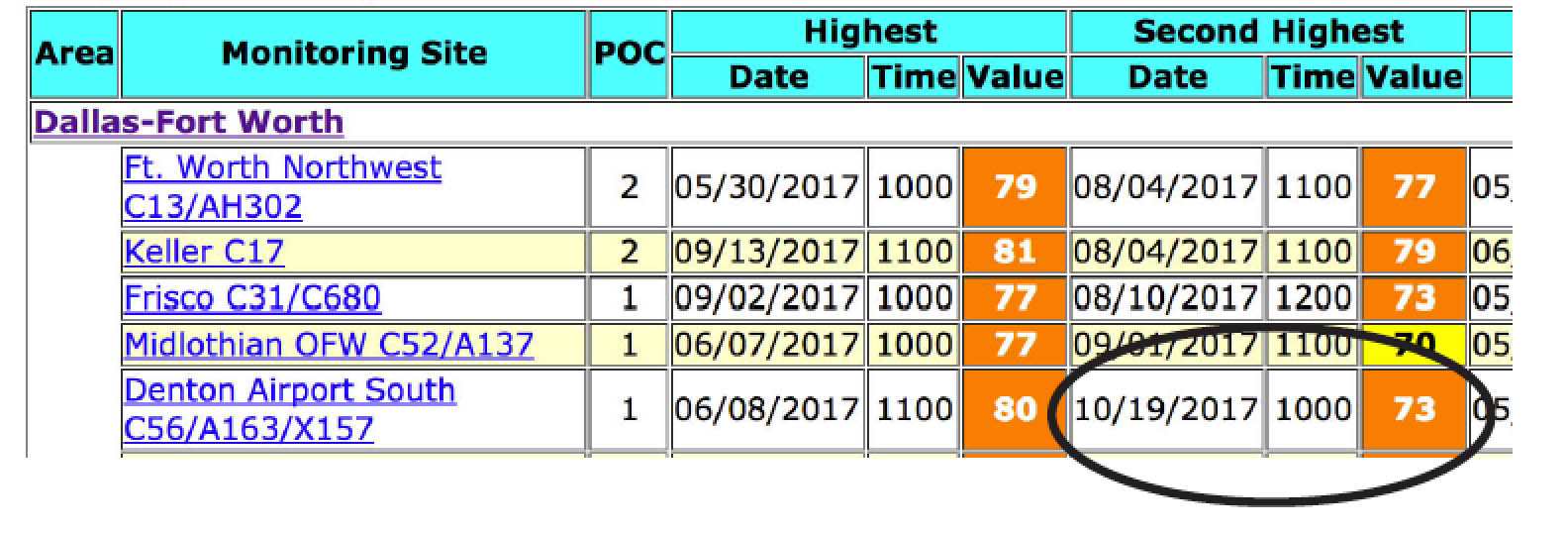
This is why Downwinders at Risk filed the first of what we’re sure will be a series of Texas Open Record Act requests last Friday seeking:
“Any and all printed or electronic documents and electronic media containing information concerning or related to ozone, particulate matter and/or haze air pollution readings and levels in the Dallas-Forth Worth non-attainment area on Thursday, October 19th 2017, including official ozone action warnings issued, complaints filed about air quality in the Dallas-Fort Worth area that day, photographs, satellite images, computer modeling, as well as all material related to any questions, inquiries, or investigations about air quality in DFW on October 19th anyone in the TCEQ, or contracted by TCEQ has been tasked to perform since October 19th or is still performing currently, and e-mails, letters, reports, telephone logs and notes, memos and all other material about October 19th air quality from 6 am Tuesday October 19th to Wednesday October 25th, 2017.”
TCEQ has until November 10th to respond. We’ll keep you posted.
In the meantime, this episode becomes Exhibit A in why DFW needs to catch-up with other metro areas and build its own network of high tech air quality sensors.
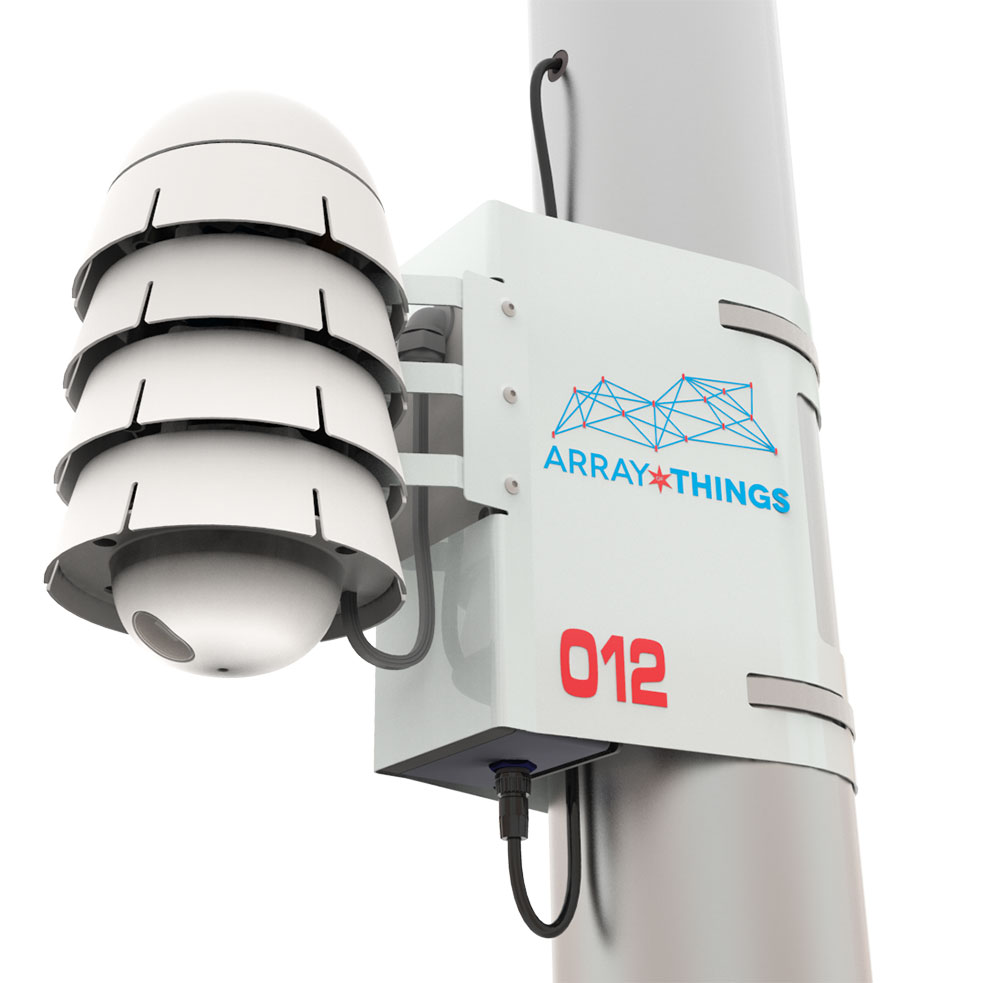
If such a grid had been in place, there would have been a real time warning of the PM and ozone pollution being generated shortly after the it started. There would have been a way to locate the source of the pollution right away and do something about it before it got worse, and there would have been a way to predict the plume’s course and warn those in its path before it got there – not two hours after it arrived.
In this sense a modern sensor grid is actually a pollution prevention device, an investigative tool, and an early warning system all rolled into one.
In a metropolitan area that’s been out of compliance with the Clean air Act for 27 years and counting over 14 million lungs are being held hostage by a state air quality monitoring system left over from the 1990’s. It’s being maintained by a state agency that’s run by polluters, officially thinks smog isn’t bad for you, and is cutting its air monitoring budget.
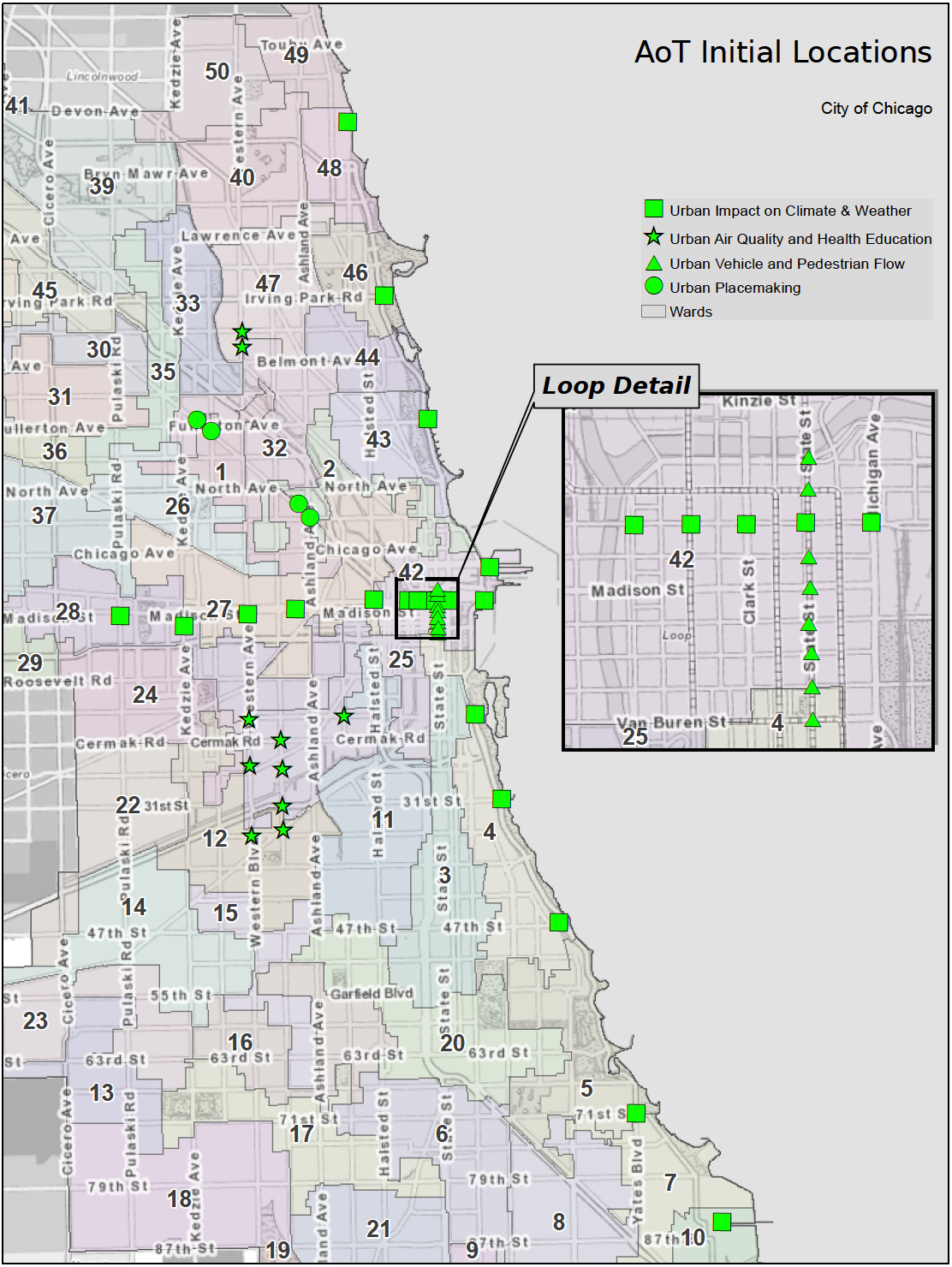 There’s no desire in Austin to update this obsolete system and no money to do so. If DFW officials want to utilize 21st Century technology to help them clean their air, they’re going to have to build their own network of air monitors – exactly the proposal the DFW Air Research Consortium was trying to get funded with a National Science Foundation grant. Close, but no cigar.
There’s no desire in Austin to update this obsolete system and no money to do so. If DFW officials want to utilize 21st Century technology to help them clean their air, they’re going to have to build their own network of air monitors – exactly the proposal the DFW Air Research Consortium was trying to get funded with a National Science Foundation grant. Close, but no cigar.
Without the NSF grant, local officials are going to need to get creative. Are there private businesses who might want to sponsor an app that could tell give you useful air quality info in exchange for naming rights: “Brought to you by the Nissan Leaf DFW Clean Air Network.” Are there local foundations that would contribute? What about local high-tech billionaire Mark Cuban? For less than a million bucks, DFW could have 500 Particulate Matter sensors that would be capable of of pinpointing a problem down to the street address.
Baltimore, Chicago, Chattanooga, Louisville, L.A. , Oakland, and Lafayette, Louisiana are all way ahead of DFW in building out their own local dense grid of air sensors. They’ve done it with a combination of private, government and academic know-how and financing.
We have as much, or more technical expertise and money than any of those locales and we should have more incentive given our chronic air pollution problem. There’s no reason we can’t build our own modern, more protective, more useful way of monitoring air pollution – even if the state isn’t interested. Not only can we do it, but in light of the events of October 19th, it should be considered a necessary act of public health self-defense.
